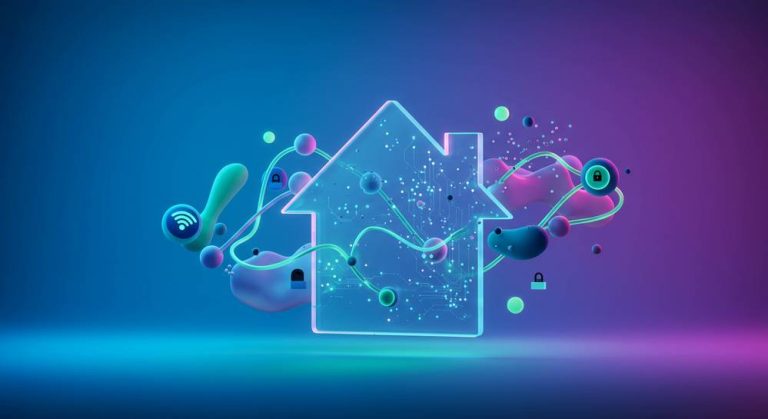As home automation continues to evolve, a smart home platform has emerged as the backbone of modern connected living. It’s not just about controlling lights with your phone or voice anymore—today’s smart homes offer seamless integration of various devices and services to create a fully automated, efficient, and secure environment. But what exactly is a smart home platform, and how does it tie everything together?
In this article, we’ll explore what a smart home platform is, how it works, and why it’s essential for creating a truly smart living experience. We’ll also dive into the key features, benefits, and examples of popular smart home platforms in the market today.
What is a Smart Home Platform?
A smart home platform is a software or ecosystem that enables different smart devices and systems in your home to communicate with each other. It acts as the central hub or framework that connects various devices—such as lights, thermostats, security cameras, smart locks, speakers, and appliances—and allows you to control, automate, and monitor them from one interface.
Think of it as the operating system for your home’s devices. It doesn’t just allow you to control individual devices; it enables inter-device communication, automation (e.g., lights turning on when you enter a room), and remote access from anywhere, using apps, voice assistants, or physical controllers.
How Does a Smart Home Platform Work?
A smart home platform typically consists of three main components:
Connectivity Layer: The platform connects all smart devices within the home using wireless communication protocols like Wi-Fi, Bluetooth, Z-Wave, or Zigbee. This allows devices to send and receive information, even if they’re from different manufacturers or ecosystems.
Control Interface: Once the devices are connected, the platform provides a user interface (UI) for managing those devices. This UI can be through a mobile app, voice commands (e.g., Google Assistant, Amazon Alexa), web browser, or even a touchscreen hub (like a smart speaker or dedicated control panel).
Automation and Integration: The platform allows users to set up automated routines and schedules for their devices. For example, the thermostat can automatically adjust when you leave for work, or the lights can turn on as you arrive home. Additionally, these platforms can integrate with other services (e.g., weather apps, calendars, or security systems) to make decisions based on data from other sources.

Key Features of a Smart Home Platform
Device Integration: The core feature of a smart home platform is its ability to integrate devices from different brands and ecosystems. You can have a mix of smart lights from Philips Hue, security cameras from Ring, a thermostat from Nest, and even a robotic vacuum from iRobot, all working together under one platform.
Centralized Control: A smart home platform provides a single point of control for all your smart devices. You don’t need to switch between different apps to control your lights, thermostat, and security system. Everything can be managed from one place.
Voice Control: Many smart home platforms work with voice assistants like Amazon Alexa, Google Assistant, or Apple Siri. This allows you to control your devices hands-free, making it even more convenient to adjust settings, play music, or lock the doors.
Automation and Routines: Smart home platforms support automation, which means you can set up schedules or triggers for your devices. For example, you can automate your lighting to turn off at sunrise or program your thermostat to lower the temperature when you’re asleep.
Remote Access: A major benefit of using a smart home platform is the ability to control your devices remotely via a smartphone app or web portal. This is perfect for checking security cameras while on vacation or adjusting the thermostat before you arrive home.
Security & Alerts: Smart home platforms often come with security features, including motion sensors, smart cameras, doorbell cameras, and even smart locks. Many platforms will send push notifications or email alerts in case of suspicious activity, providing peace of mind.
Energy Management: Many platforms also offer energy monitoring tools, allowing you to track energy usage across your devices. This can help you optimize your home’s energy consumption, reduce bills, and make eco-friendly choices.
Benefits of a Smart Home Platform
With a smart home platform, everything can be controlled from one app, voice assistant, or hub. Gone are the days of managing multiple apps or devices separately. Automation features make your home more intuitive and responsive to your needs.
Instead of being limited to one brand or ecosystem, a smart home platform gives you the freedom to mix and match devices from different manufacturers. It ensures compatibility between devices from various smart tech ecosystems, enabling a smoother user experience.
With the ability to monitor and control security cameras, door locks, and alarms from one interface, smart home platforms enhance the safety of your home. Automated security features—like alerts and automatic locking of doors—offer peace of mind.
A smart home platform can help you optimize energy usage by adjusting lighting, heating, and cooling systems based on your habits. Over time, this can lead to lower energy costs and a more sustainable lifestyle.
You can customize your smart home environment to fit your lifestyle. Whether it’s setting up mood lighting for movie nights, adjusting the temperature for comfort, or automating your daily routines, the platform provides flexibility to make your home work for you.
Popular Smart Home Platforms in 2025
Several smart home platforms are leading the charge in providing connected experiences. Some of the most popular include:
Amazon Alexa: One of the most widely used platforms, Alexa supports a broad range of smart devices and can be controlled via voice commands, apps, or smart hubs like the Echo Show. Alexa integrates well with a variety of third-party smart devices.
Google Home (Nest): Google Home leverages Google Assistant to control your devices with voice commands. It integrates well with Google services, such as Google Calendar and Google Maps, making it an excellent choice for those invested in the Google ecosystem.
Apple HomeKit: For users heavily involved in the Apple ecosystem, HomeKit offers a seamless experience. With robust privacy and security features, it allows you to control devices via Siri and Apple devices like iPhones, iPads, and Apple Watches.
Samsung SmartThings: Known for its flexibility and compatibility with various devices, SmartThings works with Zigbee, Z-Wave, and Wi-Fi, making it one of the most versatile smart home platforms available.
Wink Hub: While not as popular as the other platforms, Wink Hub is known for its simple, straightforward setup and compatibility with a wide range of devices.
A smart home platform is the digital ecosystem that ties your home’s devices together, making it easier to control, automate, and monitor everything with just a few taps or voice commands. From energy savings to enhanced security and convenience, these platforms have become indispensable tools for modern homes.
By providing centralized control, seamless integration, and smart automation, a smart home platform elevates your living experience, turning your home into a truly connected, intelligent environment. Whether you’re starting small with a few devices or going all-in with a fully automated home, the right platform can make all the difference in creating a smarter, more efficient home.












